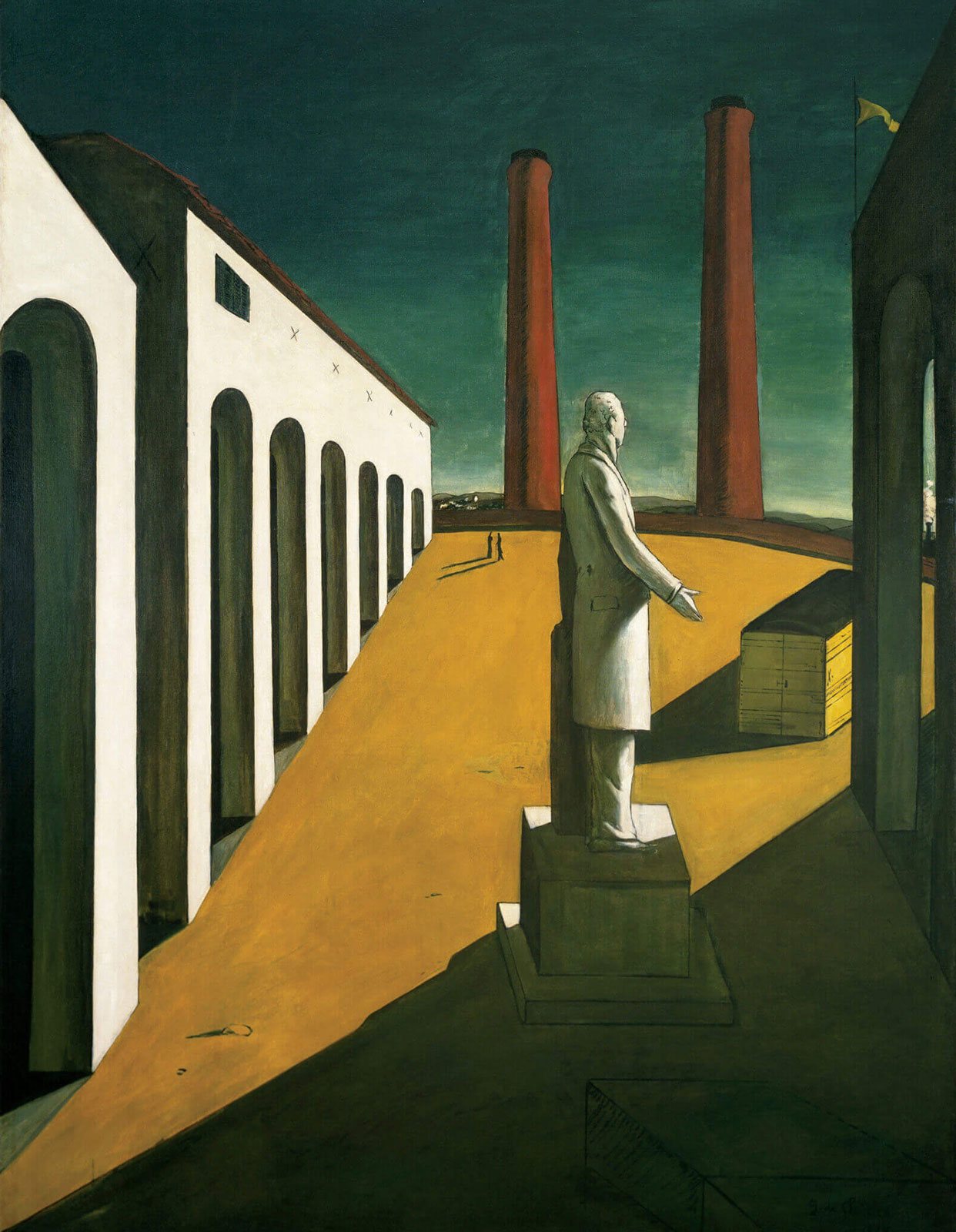Revolutionary Absence
Giorgio de Chirico and the early Situationist International
Ara H. Merjian
Led by Guy Debord until its dissolution in 1972, the Situationist International exerted a large proportion of its activist and intellectual energies reimagining the conditions of urban existence under late capitalism. Though it emerged in 1957 out of two postwar avant-garde collectives, the Lettrist International and CoBrA, situationism grappled most actively with the lingering influence of André Breton’s surrealism. As Tom McDonough writes, the group’s earliest efforts found Debord and others “rearticulating the insights of interwar surrealism” and “rediscovering its key texts” while seeking the means to realize them in actual time and space.[1] Desire, in other words, would no longer serve as a mere shibboleth of anti-bourgeois sentiment, but would be used actively to make over the built environment in its own revolutionary image. Of all the painters associated with surrealism, perhaps the most consistently attuned to the “psychogeographic” dimensions of Paris was Giorgio de Chirico, whose self-styled Metaphysical paintings, produced between 1910 and 1919, anticipated surrealist dépaysement by more than a decade, and came to form one of its chief visual touchstones. Nourished on a sustained engagement with Nietzschean philosophy—rather than the Freudian tenets that would later drive surrealism—de Chirico’s eerily evacuated cityscapes sidestepped unconscious evocations in favor of an exploration of the city as a site of modern myth. Created in Paris on the eve of World War I, de Chirico’s paintings exchange actual spaces for mood, and this foregrounding of atmosphere recommended their unswervingly urban imagery to the burgeoning situationist conception of “ambiance.”

One scholar has deemed de Chirico the “primary architectural inspiration” of early situationism, while another has called the painter a “situationist exemplar.”[2] Such designations raise a number of questions, however—questions altogether ignored in existing literature. For which aspects of situationist theory or practice might de Chirico’s cityscapes be said to have proven exemplary? What, precisely, did the situationists find inspiring in Metaphysical painting? If Debord could declare surrealism “perfectly boring and reactionary,” one wonders how de Chirico’s work dodged this same verdict.[3] After all, the artist’s patrician and Nietzschean boredom defied the very possibility of the situationist concept of “unitary ambience.” If Nietzsche’s “revaluation of values” lay at the heart of Metaphysical painting’s illogical lyricisms, we should recall that the German philosopher had deemed his philosophical methodology “perhaps possible for me alone.”[4] From the start of his Metaphysical venture, de Chirico’s own declarations rehearse this same exclusivity; “I am the only man to have truly understood Nietzsche—all of my work demonstrates this,” he writes in a letter of January 1910.[5] Despite the consistently public dimensions of his piazzas, their enigmatic constellations of objects and signs prove jealously private. While we find recognizable things (a rubber ball, a glove, a plaster cast), the significance of their confluence in these city spaces—and on de Chirico’s canvas—remains willfully hermetic: philosophical lyricisms addressed to an elect, initiated few.